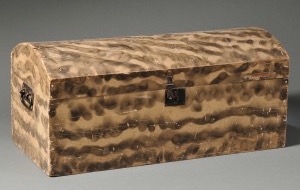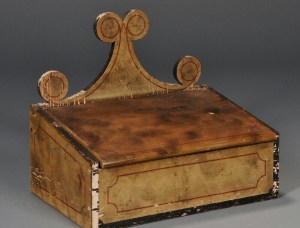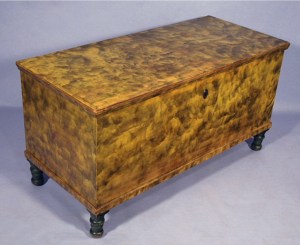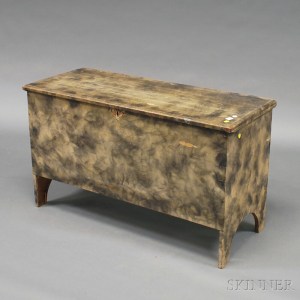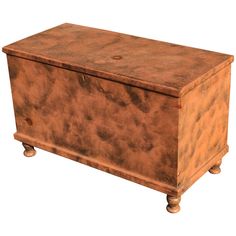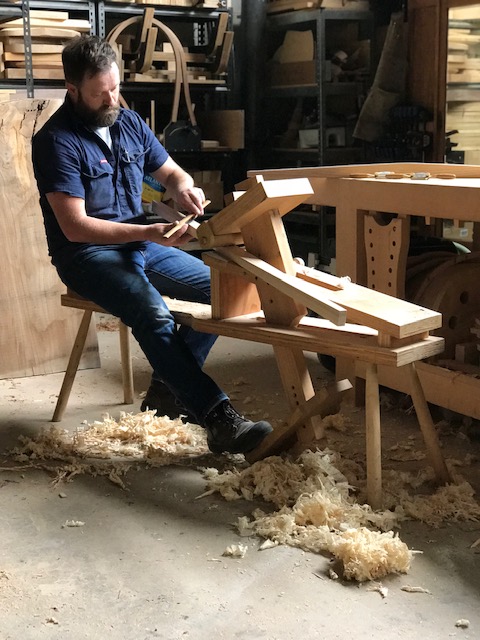
Soot was one of the earliest materials used by humans to decorate their surroudings. In the late 18th century and well into the 19th century smoke painting was a decorative technique used on furniture. It was cheap and the smoke could be manipulated into a variety of patterns, from waves of haze to leopard-like spots. If you are looking for a different and easy-to-use decorative technique give it a try.
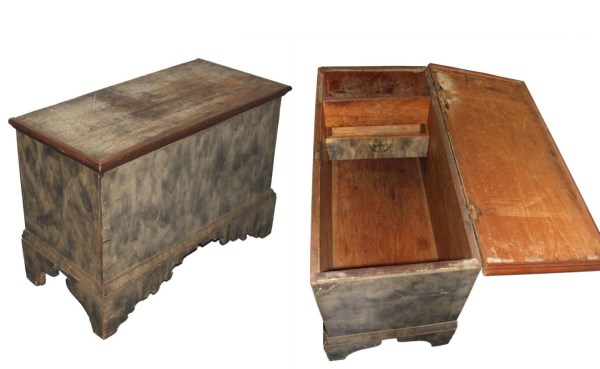
On this blanket chest the smoke has been smudged and softened before a clear finish was applied. Smoke painting the drawer front inside the chest is an unusual feature.
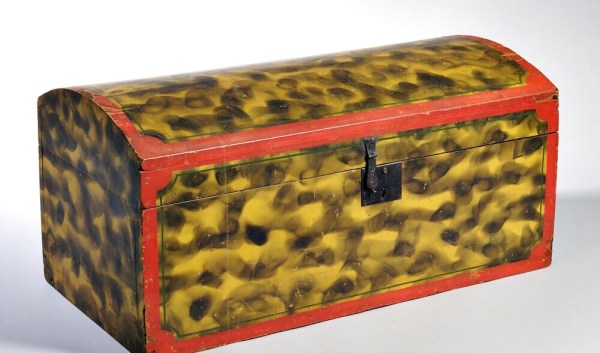
White and yellow were the most common background colors used. This dome-top chest with a bright yellow background has the addition of a snappy red trim.
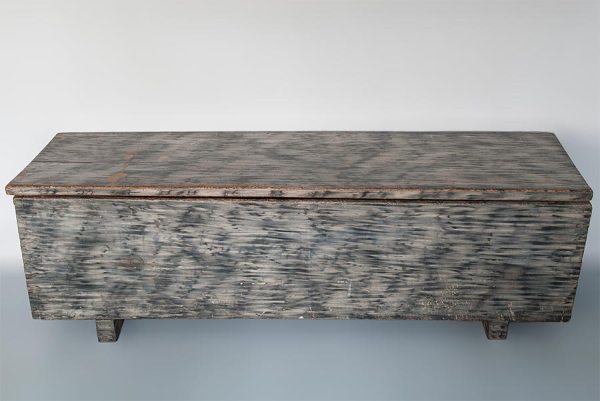
The Snow Hill chest is the oldest piece I found and it looks as though a graining tool was used to manipulate the smoke.

This upright chest from New England is dated early to mid-19th century. The painter used the smoke in a controlled manner to achieve a very regular pattern. I would guess that the “smoke trails” were smudged to soften the edges and increase the coverage of smoke.
Although not as common as the white and yellow backgrounds there are pieces with other background colors and they are especially valued by collectors of smoke-painted furniture.
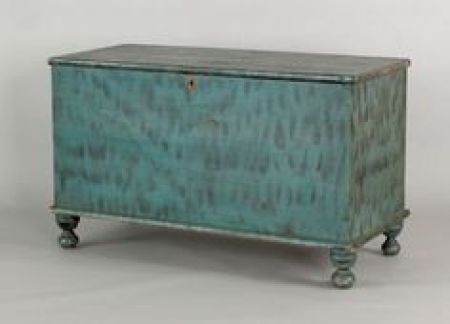
A nice blue with a simple pattern and a racy red veering toward leopard spots.
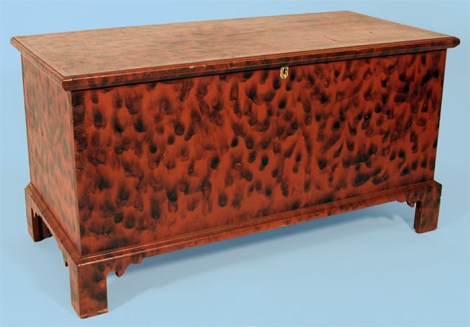
Chests and boxes were not the only furniture given the smoke paint treatment. In the piece below only the table top of a drop-leaf table was smoke-painted.
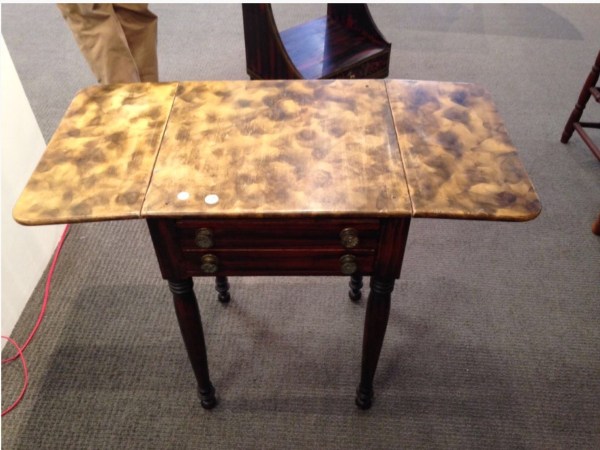
If you want to try smoke painting make several sample boards first to practice the technique and determine the kind of pattern you prefer. Smoke painting is not a difficult process but it does involve using an open flame so there are several precautions. These are same precautions you would used when working with any flammable material.
It is best to work outside with another adult, avoid windy conditions and paper-covered surfaces. Have a bucket of water and a fire extinguisher nearby. The tools you will need are a candle and a palette knife or other flat tool. The palette knife is held at the tip of the candle flame to create a sooty smoke.
Apply a basecoat of milk paint to the surface. Use enough coats to get the depth of color you prefer. While the basecoat is still damp light the candle and use the palette knife to get a sooty flame. Hold the still-damp painted surface above the sooty smoke and move it around to create your pattern (this is where the second adult come in). If desired, once the smoke is on the surface use your fingers, a brush or other tool to smudge the soot. After smoking (the furniture, not you) let the piece dry. Apply shellac or other clear finish you normally use.
The gallery below has a several more examples of smoke-painted boxes, chests and a small wall box.
–Suzanne Ellison
